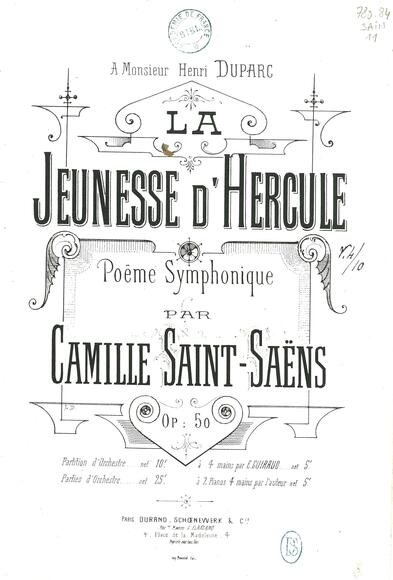La Jeunesse d’Hercule

Symphonic poem dedicated to Henri Duparc.
The last of the four symphonic poems by Saint-Saëns, who is credited with introducing the genre into France in the 1870s, La Jeunesse d’Hercule was completed on 6 January 1877 and premiered a few days later at the Théâtre du Châtelet, conducted by Édouard Colonne. Having already drawn inspiration from the story of the famous Greek hero in Le Rouet d’Omphale (1872), his first symphonic poem, Saint-Saëns devoted this new “fable” – he thus defined his work in the argument heading the score – to the fundamental choice made by the young Hercules, who, forsaking pleasures, embarked on the path of virtue. In this work, with its subtle, colourful orchestration, an incessant dialogue between the two opposing forces opens up, similar to the one that would emerge two years later between the two instruments in La Lyre et la Harpe (1879). On two occasions, Hercules rejects the advances of the “Nymphs and Bacchantes”. The composer contrasts their sweet melodies and a bewitching bacchanal that heralds the Orientalizing Samson et Dalila (1877) with a solemn, serious theme depicting “the struggles and fights” required by the quest for virtue. In a triumphant conclusion, Hercules “glimpses, through the flames of the pyre [suggested by the fiery dance of the strings and the crackling of the harps], the reward of immortality”. La Jeunesse d’Hercule, a score dedicated to Henri Duparc and admired by Franz Liszt (whose own symphonic poems inspired Saint-Saëns), received a mixed reception. Nevertheless, the work was the object of numerous transcriptions for various instrumental ensembles.

